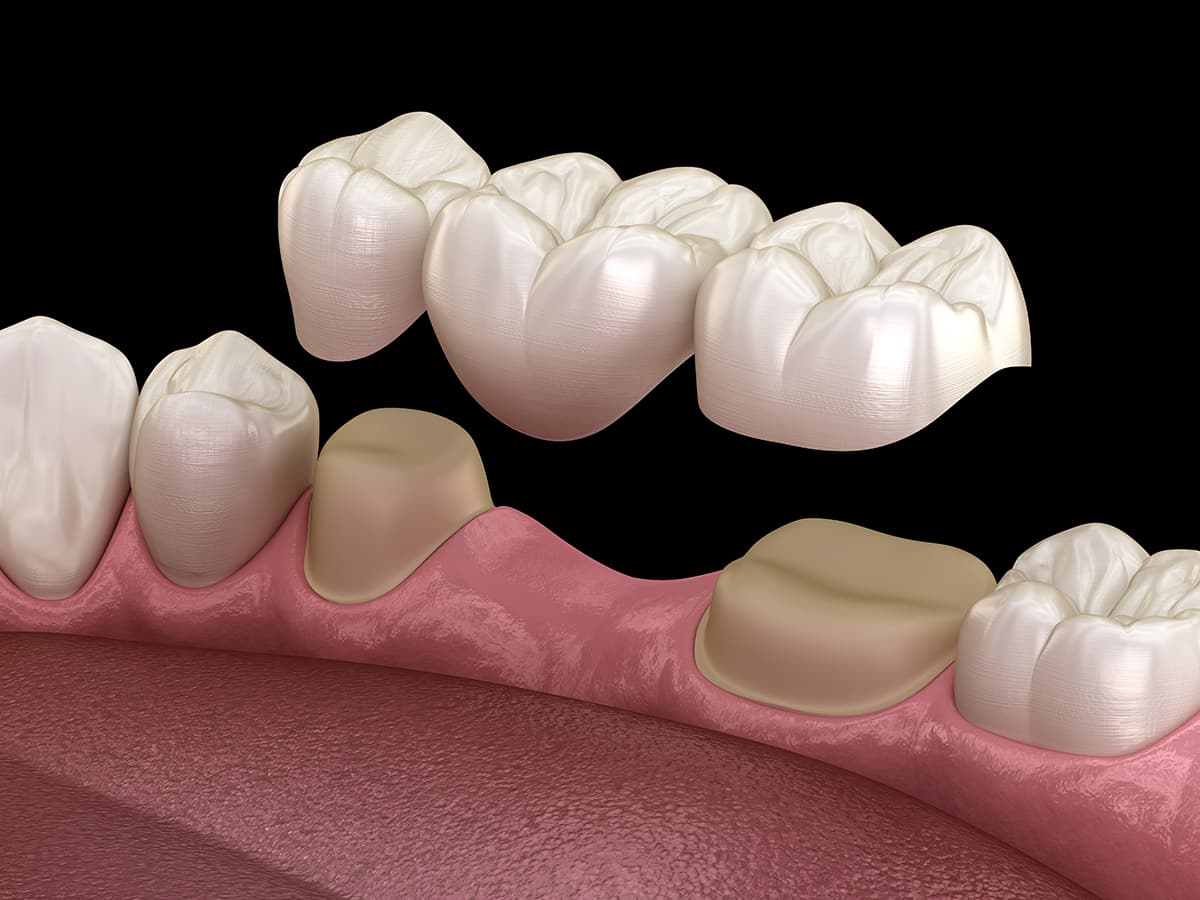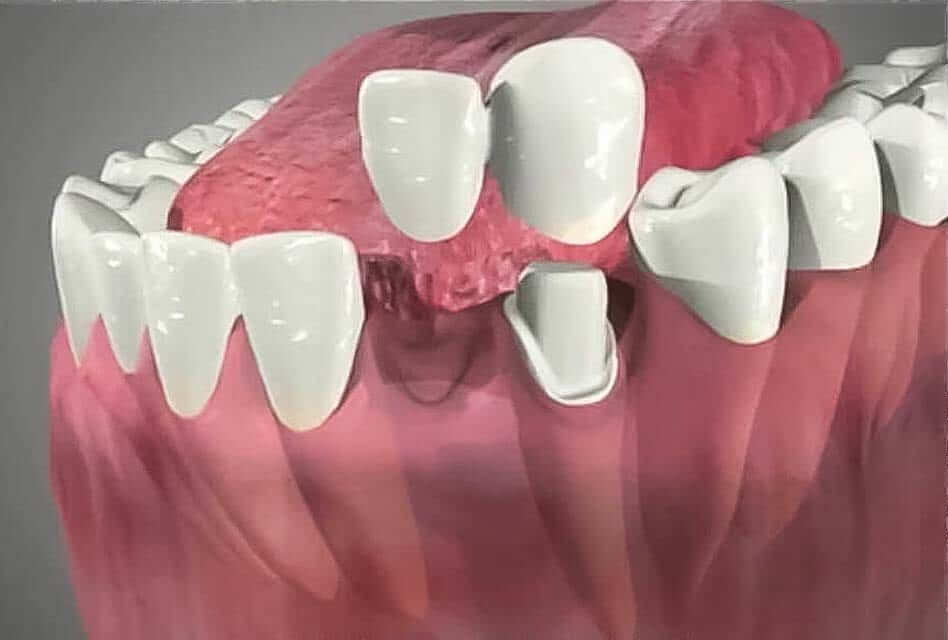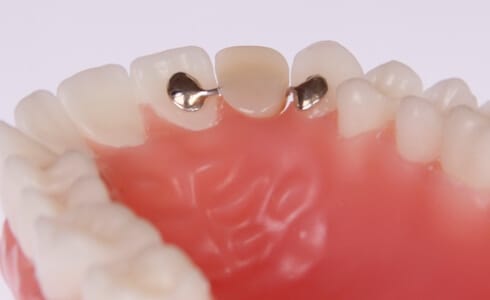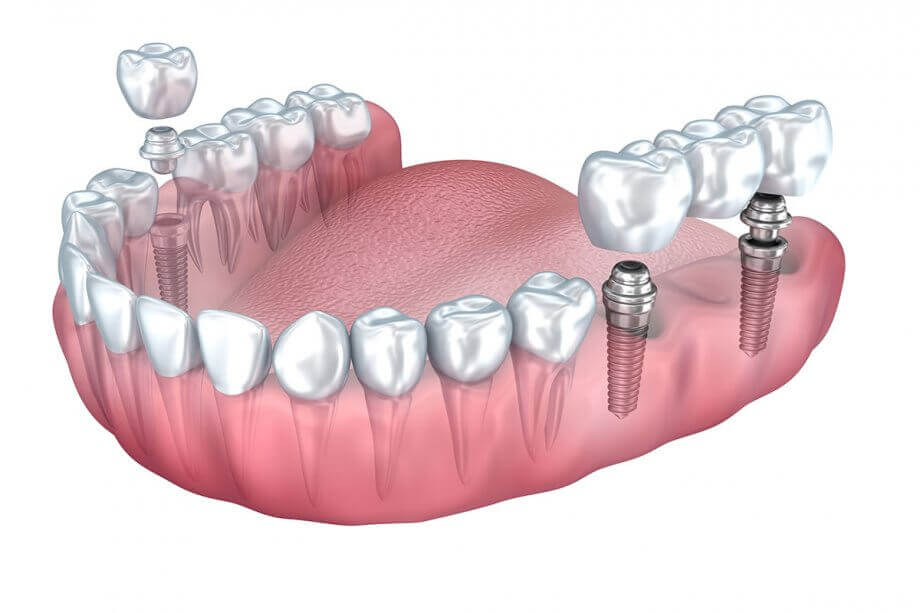Missing teeth can sap your confidence and destroy your self-esteem by leaving you with gaps in your smile. Thanks to today’s modern dental techniques, you now have several options for replacing missing teeth and restoring your oral health. Much as a bridge fills in the space between two land masses, dental bridges fill in an unwelcome gap to produce a complete smile.
What Is a Dental Bridge?
If you have missing teeth, Dr. Pham can close or “bridge” the gaps in your smile with dental bridges. A dental bridge is a false tooth (called a pontic) that is held in place by the abutment teeth on either side of the gap. A dental bridge is a great solution that uses the natural teeth that you have on either side of the gap to hold a fake tooth in the correct place. Although pontics can be made from a variety of materials, typically they’re made from porcelain to aesthetically blend in with your natural teeth. In order to be a candidate for a bridge, you must have a natural tooth remaining next to the gap to support the bridge. If this is not the case, Dr. Pham can discuss with you other options available to restore the space.
What Do Dental Bridges Treat?
Dental bridges can treat a single gap or larger gaps in the mouth depending on the type used. You may need a bridge if you have lost a tooth from an accident or injury, or if you had a tooth extracted due to extensive decay or infection.
What Are Fixed Vs. Removable Bridges?
The majority of dental bridges are fixed, which means that they are permanently affixed to nearby teeth. Thus, they are treated similarly to natural teeth. Removable bridges can be taken out for cleaning. They are often called partial dentures. They clip onto nearby teeth or onto crowns attached to nearby teeth.
What Happens During the Procedure?
Your treatment will depend on the type of bridge that Dr. Pham recommends for you. However, the first step is preparing the adjacent teeth. If crowns are to be used, Dr. Pham will first prepare the teeth to get rid of any decay and to make room for the crowns. You will then get a temporary bridge that you will wear until your customized bridge is ready.
When you return for your second appointment, Dr. Pham will cement the bridge to the prepared abutments. Your gums may feel a bit sore for a few days, but this should not keep you from your daily tasks. After your bridge is in place, you should brush and floss around it just as you do your natural teeth.
What Are the Benefits of Dental Bridges?
The most obvious value of dental bridges is that they restore your smile and reduce your embarrassment. However, they serve many other important purposes as well. When you have a full line of teeth on both your upper and lower jaws, you will be able to bite and chew properly. You will also find that it becomes easier to speak. In addition, your teeth support the tissues of your lips and cheeks. Therefore, a bridge can help you maintain the natural shape of your face. Finally, bridges prevent your remaining teeth from shifting into new positions. This can maintain your proper bite and keep your enamel from unnatural wear.







